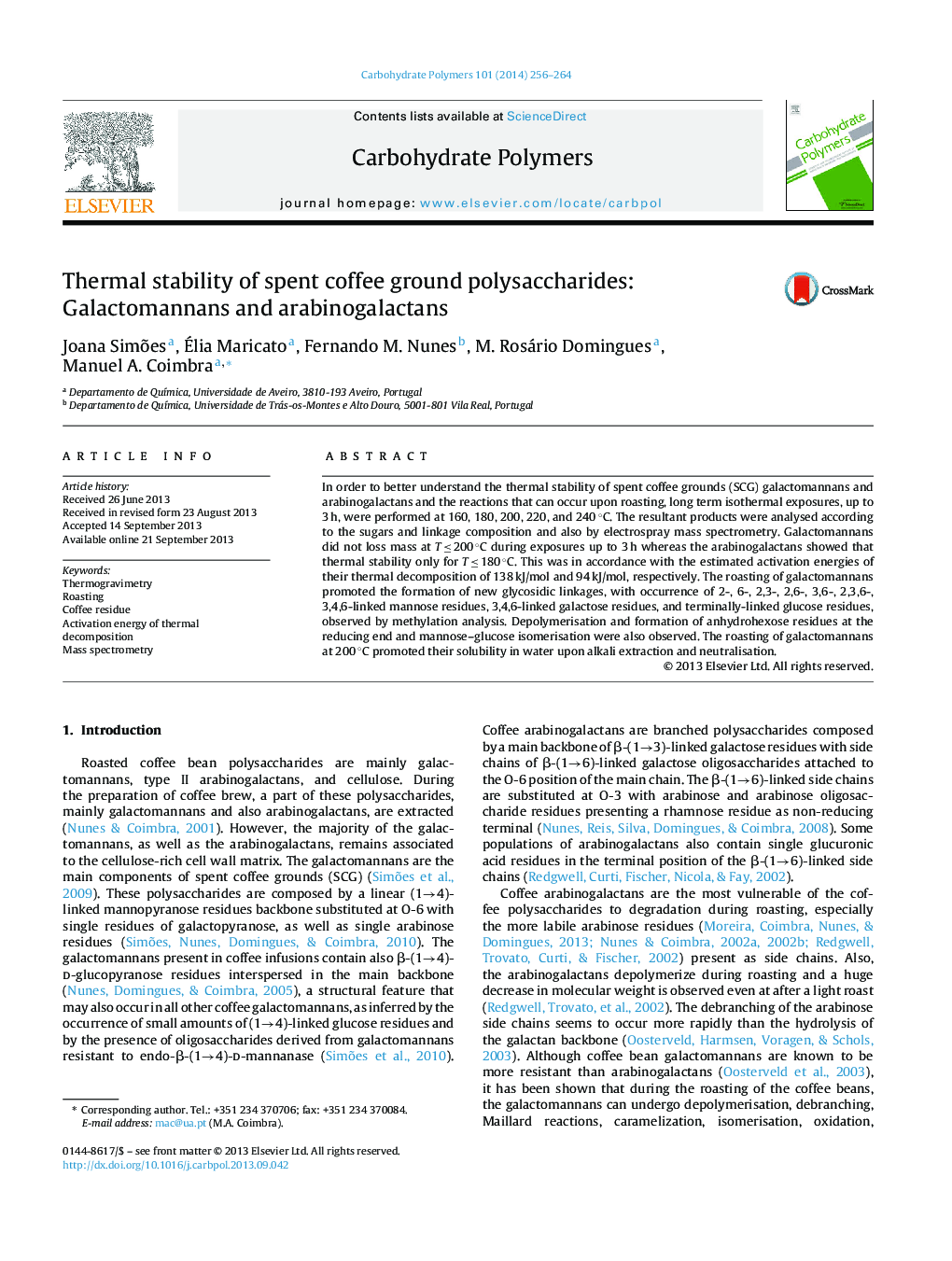| Article ID | Journal | Published Year | Pages | File Type |
|---|---|---|---|---|
| 7792741 | Carbohydrate Polymers | 2014 | 9 Pages |
Abstract
In order to better understand the thermal stability of spent coffee grounds (SCG) galactomannans and arabinogalactans and the reactions that can occur upon roasting, long term isothermal exposures, up to 3 h, were performed at 160, 180, 200, 220, and 240 °C. The resultant products were analysed according to the sugars and linkage composition and also by electrospray mass spectrometry. Galactomannans did not loss mass at T â¤Â 200 °C during exposures up to 3 h whereas the arabinogalactans showed that thermal stability only for T â¤Â 180 °C. This was in accordance with the estimated activation energies of their thermal decomposition of 138 kJ/mol and 94 kJ/mol, respectively. The roasting of galactomannans promoted the formation of new glycosidic linkages, with occurrence of 2-, 6-, 2,3-, 2,6-, 3,6-, 2,3,6-, 3,4,6-linked mannose residues, 3,4,6-linked galactose residues, and terminally-linked glucose residues, observed by methylation analysis. Depolymerisation and formation of anhydrohexose residues at the reducing end and mannose-glucose isomerisation were also observed. The roasting of galactomannans at 200 °C promoted their solubility in water upon alkali extraction and neutralisation.
Related Topics
Physical Sciences and Engineering
Chemistry
Organic Chemistry
Authors
Joana Simões, Ãlia Maricato, Fernando M. Nunes, M. Rosário Domingues, Manuel A. Coimbra,
